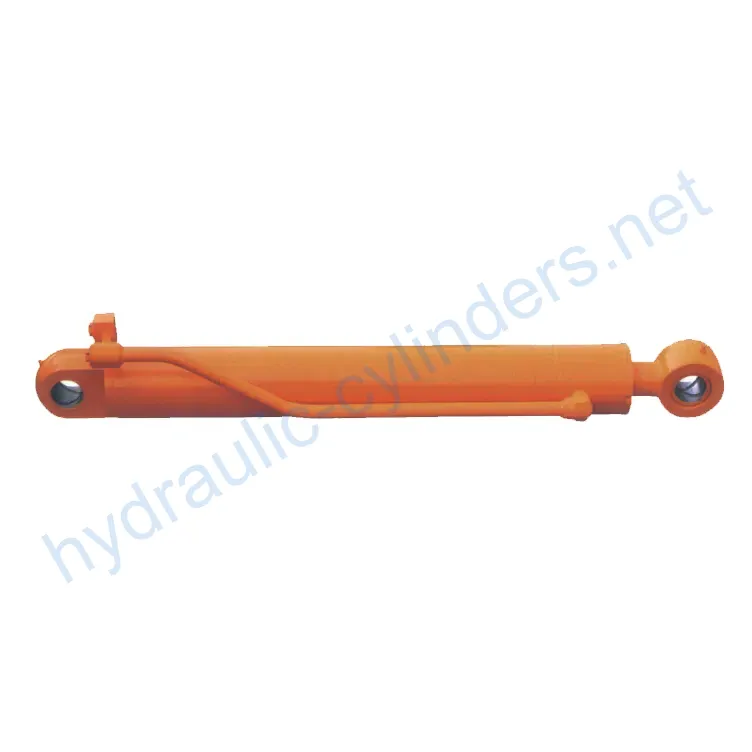Arm Cylinder For Sunward Middle Excavator SWE210
Als één van de fabrikanten, de leveranciers en de exporteurs van van de hydraulische cilinders mechanische producten, bieden wij hydraulische cilinders en veel andere producten aan.
Neem contact met ons op voor meer informatie.
Mail:sales@hydraulic-cylinders.net
Fabrikant leverancier exporteur van hydraulische cilinders.
Arm Cylinder For Sunward Middle Excavator SWE210
Introduction
The arm cylinder is a specially designed hydraulic cylinder that provides linear motion and power to the arm of various machinery, such as excavators, cranes, and robotic arms. It plays a crucial role in hydraulic systems, enabling the efficient movement and control of additional tools or attachments. These cylinders not only ensure smooth motion but also withstand heavy loads, ensuring high operational efficiency and reliability in various working conditions.

Features
- High-Efficiency Transmission: The arm cylinder provides powerful linear motion and force, ensuring high-performance capabilities for the mechanical arm in various operations.
- Precise Control: Through the hydraulic system, the arm cylinder enables precise motion control, making the operation of attached tools more flexible and accurate.
- Durability: Arm cylinders are typically manufactured using high-strength materials, offering excellent wear resistance and corrosion resistance, suitable for long-term use in harsh environments.
- Multi-functional Adaptability: These cylinders are widely applicable to various machinery such as excavators, cranes, and robotic arms, adapting to different working requirements.
- Easy Maintenance: Designed for ease of maintenance and replacement, arm cylinders facilitate regular inspections and maintenance, reducing equipment downtime.

Applications
Arm cylinders find applications in various industries:
- Construction Engineering: Used in excavators and cranes, arm cylinders control the movement of buckets or booms for earthworks, material handling, and structural installations.
- Manufacturing Industry: Arm cylinders are utilized in automated production lines for the movement of robotic arms, facilitating assembly, welding, and material handling processes, thereby improving production efficiency and precision.
- Agricultural Machinery: Arm cylinders control the motion of operating arms in agricultural machinery such as harvesters and seeders, performing tasks like seeding, fertilizing, and harvesting.
- Mining: In mining equipment, arm cylinders control the arm movement for mining and transportation of ores.
- Logistics and Transportation: Forklifts and handling robots employ arm cylinders to control the lifting and movement of forks, enabling material handling and stacking.
Design Considerations and Selection Criteria
When designing and selecting arm cylinders, several factors must be considered:
- Load-Bearing Capacity: The cylinder should be able to handle the required load to ensure optimal performance and safety.
- Sealing: Various sealing components, such as piston seals and rod seals made from wear-resistant materials like polyurethane and nitrile rubber, are used to ensure effective sealing.
- Durability: The cylinder body and threaded ends undergo meticulous treatment to enhance their wear resistance, ensuring long-lasting performance.
- Safety: Safety measures should be implemented to prevent accidents and ensure operator protection during operation.
- Maintainability: Regular lubrication with suitable hydraulic oil and periodic maintenance help extend the service life of the arm cylinder.

Sealing and Lubrication
The arm cylinder utilizes various sealing components, such as piston seals and rod seals made from materials like polyurethane and nitrile rubber, to ensure effective sealing. The cylinder body and threaded ends are finely treated to improve wear resistance. Regular lubrication with an appropriate amount of hydraulic oil is necessary to ensure proper lubrication of moving parts.
Regular Inspection and Preventive Maintenance
To maintain optimal performance and prevent unexpected failures, regular inspections and preventive maintenance are essential. The following measures should be taken:
- Inspect the cylinder for any signs of leakage, damage, or wear.
- Check the condition of sealing components and replace them if necessary.
- Ensure proper lubrication of all moving parts.
- Tighten all connections and fasteners as needed.
- Monitor the cylinder’s performance and address any abnormal behavior promptly.
Product Installation Guide
Proper installation of the arm cylinder is crucial for its performance and longevity. Follow these steps:
- Ensure the equipment is powered off and the hydraulic system is depressurized.
- Align the cylinder in the desired position and insert the rod end into the mounting bracket or connection point.
- Secure the cylinder in place using suitable mounting bolts or pins.
- Connect the hydraulic hoses to the cylinder, ensuring proper alignment and tight connections.
- If necessary, adjust the cylinder stroke length or mounting position to meet the equipment’s requirements.
- Once the installation is complete, thoroughly inspect all connections and perform a functional test.

Safety Considerations and Environmental Factors
When working with arm cylinders, safety precautions are vital to prevent accidents and ensure operator well-being. Adhering to safety measures during operation and maintenance is essential for a safe working environment.
Troubleshooting and Common Issues
Arm cylinders may encounter certain problems. Here are some common issues and their potential solutions:
- Leakage: Inspect the cylinder for damaged seals or connections and replace them if necessary. Tighten loose connections.
- Slow or Erratic Movement: Check the hydraulic fluid level and quality. Ensure the system is properly pressurized. Inspect for any blockages or damaged components.
- Excessive Noise or Vibrations: Inspect the cylinder for loose or damaged parts. Check for misalignment or bent rods. Lubricate moving parts.
By following these troubleshooting tips and preventive measures, readers can effectively diagnose and resolve issues while minimizing potential problems.

About Us – lyl
We are a professional manufacturer of replacement hydraulic cylinders, offering a wide range of products. We have become one of the leading manufacturers and wholesale distributors of hydraulic cylinders in domestic and international markets. With our commitment to excellent quality, we continuously enhance our technological capabilities and production efficiency through the implementation of advanced manufacturing strategies in our finely-tuned production workshop. By introducing high-end digital manufacturing equipment and professional testing systems, we optimize our manufacturing platform and improve our product quality control processes, ensuring strong innovation capabilities. Our goal is to meet the diverse needs of customers with principles of efficiency, precision, and high quality.


Take a Tour of Our VR Factory:
Take a tour of our VR factory with the following
Hydraulic Cylinder Application:


